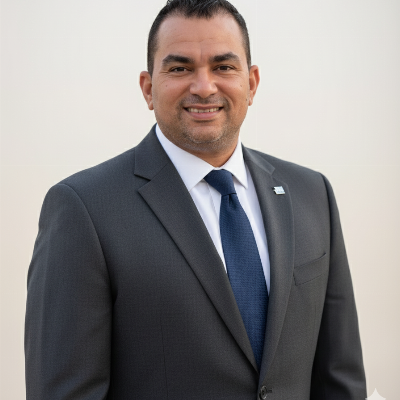The PLC training programme for the SIEMENS STEP-7 1200 controller is a comprehensive and structured course designed to equip participants with both foundational and advanced knowledge of Programmable Logic Controllers (PLCs). This training is meticulously divided into five modules, each targeting specific aspects of PLC technology, programming, and practical application.
Module 1: Introduction to PLC and Equipment Overview
The first module sets the stage by introducing participants to the fundamental concepts of PLCs. It begins with a clear explanation of what a PLC is, elucidating its role and importance in automation systems. Following this, an overview of the SIEMENS STEP-7 1200 controller is provided, highlighting its features and capabilities. This module also covers the installation and configuration of the essential software, SIMATIC STEP 7 Basic, ensuring that participants can set up their systems correctly. The final part of this module involves connecting and performing the initial setup of the controller, establishing a solid foundation for subsequent learning.
Module 2: Programming Fundamentals
In the second module, the focus shifts to the basics of PLC programming. Participants are introduced to various PLC programming languages such as Ladder Logic (LAD), Function Block Diagram (FBD), and Structured Control Language (SCL), and their respective applications. This module is hands-on, guiding learners through the creation of their first program involving simple logical operations. It further delves into the use of variables in programming, and the processes of uploading and downloading programs to and from the controller. Additionally, debugging and testing are emphasized to ensure that the programs function correctly.
Module 3: Advanced Programming and Diagnostics
Building on the foundational knowledge, the third module explores more advanced programming techniques and diagnostics. Participants learn to work with both analog and digital inputs and outputs, which are crucial for real-world applications. The module also covers the programming of timers and counters, which are essential for creating time-dependent and repetitive processes. Furthermore, the basics of diagnostics and troubleshooting are introduced, equipping participants with the skills to identify and rectify issues that may arise during operation.
Module 4: Project Work and Visualization
The fourth module is project-oriented, encouraging participants to apply their knowledge by planning and implementing a small project on the controller. This practical approach reinforces learning and provides hands-on experience. Additionally, the module introduces the basics of working with visualization systems, such as WinCC, enabling participants to create user-friendly interfaces for monitoring and controlling their PLC applications.
Module 5: Practical Sessions and Conclusion
The final module is dedicated to practical work and consolidation of knowledge. Participants engage in individual projects, applying the skills and concepts learned throughout the course. This module also includes a discussion of common mistakes and best practices, ensuring that participants are well-prepared to avoid and address typical issues in PLC programming and operation. The programme concludes with a final test or exam, which serves to assess the participants’ understanding and proficiency in using the SIEMENS STEP-7 1200 controller.
Conclusion
This training programme on the SIEMENS STEP-7 1200 controller is an extensive and well-structured course that covers all essential aspects of PLC technology. From basic concepts and programming fundamentals to advanced techniques and practical applications, it provides a robust learning pathway for individuals seeking to enhance their skills in industrial automation and control systems. Through a blend of theoretical instruction and hands-on practice, participants are equipped with the knowledge and confidence to effectively utilise PLCs in various industrial settings.
• Technicians working in maintenance, installation, and operation of automated systems will gain valuable hands-on experience and knowledge from this course. The practical sessions and project work are designed to enhance their ability to set up, program, and maintain PLC systems, ensuring efficient and reliable operation of industrial processes.
• Control system engineers, who design and manage control systems for manufacturing and process industries, will benefit from the in-depth coverage of PLC programming languages, advanced programming techniques, and diagnostic skills. This training will enable them to optimize control strategies and improve system performance using the SIEMENS STEP-7 1200 controller.
• Industrial electricians involved in the installation and maintenance of electrical control systems will find this course useful for expanding their knowledge of PLC technology. The training provides the necessary skills to integrate and troubleshoot PLCs within electrical control systems, enhancing their overall competency and versatility in their roles.
- Explain the basic concepts and functionality of PLCs, including their role and importance in industrial automation systems
- Describe the features and capabilities of the SIEMENS STEP-7 1200 controller
- Install and configure the SIMATIC STEP 7 Basic software required for programming the SIEMENS STEP-7 1200 controller
- Connect and perform the initial setup of the SIEMENS STEP-7 1200 controller, ensuring it is ready for programming and operation
- Create PLC programs using various programming languages such as Ladder Logic (LAD), Function Block Diagram (FBD), and Structured Control Language (SCL)
- Use variables effectively in PLC programming to manage data and control processes
- Upload and download programs to and from the SIEMENS STEP-7 1200 controller
- Perform debugging and testing of PLC programs to ensure correct functionality and troubleshoot any issues that arise
- Utilize diagnostic tools and techniques to identify and resolve problems with the controller and its programs
- Configure and program both analog and digital inputs and outputs, integrating them into PLC programs to interact with external devices and sensors
- Implement and manage timers and counters within PLC programs to control timing and counting operations
- Plan, design, and implement small-scale projects using the SIEMENS STEP-7 1200 controller, applying theoretical knowledge to practical applications
- Create user-friendly visualization interfaces using tools such as WinCC to monitor and control PLC operations
- Identify common mistakes in PLC programming and apply best practices to avoid and correct these errors
- Perform basic diagnostics and troubleshooting to maintain optimal performance of PLC systems






- What is a PLC? Basic concepts
- Overview of the SIEMENS STEP-7 1200 controller
- Installation and configuration of the necessary software (SIMATIC STEP 7 Basic)
- Connecting and initial setup of the controller
- Introduction to PLC programming languages and their differences (LAD, FBD, SCL)
- Creating the first program (simple logical operations)
- Using variables in programming
- Uploading and downloading the controller program
- Debugging and testing the program on the controller
- Working with analog and digital inputs/outputs
- Programming timers and counters
- Basics of diagnostics and troubleshooting
- Planning and implementing a small project on the controller
- Basics of working with visualization systems (for example, using WinCC)












Training can take place in 4 formats:
- Self-paced
- Blended learning
- Instructor-led online (webinar)
- Instructor-led offline (classroom)
Description of training formats:
- Self-paced learning or e-Learning means you can learn in your own time and control the amount of material to consume. There is no need to complete the assignments and take the courses at the same time as other learners.
- Blended learning or "hybrid learning" means you can combine Self-paced learning or e-Learning with traditional instructor-led classroom or webinar activities. This approach requires physical presence of both teacher and student in physical or virtual (webinars) classrooms or workshops. Webinar is a seminar or presentation that takes place on the internet, allowing participants in different locations to see and hear the presenter, ask questions, and sometimes answer polls.
- Instructor-led training, or ILT, means that the learning can be delivered in a lecture or classroom format, as an interactive workshop, as a demonstration under the supervision and control of qualified trainer or instructor with the opportunity for learners to practice, or even virtually, using video-conferencing tools.
When forming groups of students, special attention is paid to important criteria - the same level of knowledge and interests among all students of the course, in order to maintain stable group dynamics during training.
Group dynamics is the development of a group in time, which is caused by the interaction of participants with each other and external influence on the group. In other words, these are the stages that the training group goes through in the process of communicating with the coach and among themselves.
The optimal group size for different types of training:
- Self-paced / E-learning: 1
- Instructor-led off-line (classroom): 6 – 12
- Instructor-led on-line (webinar): 6 – 12
- Blended learning: 6 – 12
- Workshop: 6 – 12
- On-the-job: 2 – 4
- Simulator: 1 – 2
Feedback in the form of assessments and recommendations is given to students during the course of training with the participation of an instructor and is saved in the course card and student profile.
In order to control the quality of the services provided, students can evaluate the quality and training programme. Forms of assessment of the quality of training differ for courses with the participation of an instructor and those that are held in a self-paced format.
For courses with an instructor, start and end dates are indicated. At the same time, it is important to pay attention to the deadlines for passing tests, exams and practical tasks. If the specified deadlines are missed, the student may not be allowed to complete the entire course programme.
A personal account is a space for storing your training preferences, test and exam results, grades on completed training, as well as your individual plan for professional and personal development.
Users of the personal account have access to articles and blogs in specialized areas, as well as the ability to rate the completed training and leave comments under the articles and blogs of our instructors and technical authors
Registered users of a personal account can have various roles, including the role of a student, instructor or content developer. However, for all roles, except for the student role, you will need to go through an additional verification procedure to confirm your qualifications.
Based on the results of training, students are issued a certificate of training. All training certificates fall into three main categories:
- Certificate of Attendance - students who successfully completed the course but did not pass the tests and exams can apply for a certificate of attendance.
- Certificate of Completion - students who have successfully completed a course could apply for a Certificate of Completion, this type of certificate is often required for compliance training.
- Verified Certificate - it is a verified certificate that is issued when students have passed exams under the supervision of a dedicated proctor.
You can always download a copy of your training certificate in PDF format in your personal account.
You will still have access to the course after completing it, provided that your account is active and not compromised and Tecedu is still licensed for the course. So if you want to review specific content in the course after completing it, or do it all over again, you can easily do so. In rare cases, instructors may remove their courses from the Tecedu marketplace, or we may need to remove a course from the platform for legal reasons.
During the training, you may encounter various forms of testing and knowledge testing. The most common assessment methods are:
- preliminary (base-line assessment) - to determine the current level of knowledge and adapt the personal curriculum
- intermediate - to check the progress of learning
- final - to complete training and final assessment of knowledge and skills, can be in the form of a project, testing or practical exam
Travel to the place of full-time training is not included in the cost of training. Accommodation during full-time studies can be included in the full board tuition fees.
While Tecedu is not an accredited institution, we offer skills-based courses taught by real experts in their field, and every approved, paid course features a certificate of completion or attendance to document your accomplishment.
You can preview samples of the training materials and review key information about the course on our website. You can also review feedback and recommendations from students who already completed this course.
We want you to be happy, so almost all purchased courses can be returned within 30 days. If you are not satisfied with the course, you can request a refund, provided the request complies with our return policy.
The 30-day money back policy allows students to receive quality teaching services with minimal risk, we must also protect our teachers from fraud and provide them with a reasonable payment schedule. Payments are sent to instructors after 30 days, so we will not process refund requests received after the refund period.
We reserve the right, in our sole discretion, to limit or deny refund requests in cases where we believe there is refund abuse, including but not limited to the following:
- A significant portion of the course has been consumed or downloaded by a student before the refund was requested.
- Multiple refunds have been requested by a student for the same course.
- Excessive refunds have been requested by a student.
- Users whose account is blocked or access to courses is disabled due to violation of our Terms and Conditions or the Rules of Trust and Security.
- We do not grant refunds for any subscription services.
- These refund restrictions will be enforced to the extent permitted by applicable law.
We accept most international credit and debit cards like Visa, MasterCard, American Express, JCB and Discover. Bank Transfers also may be an option.
Conducting classes is based on the fact that the teacher demonstrates text, drawings, graphics, presentations on an interactive board, while the content appears in the student's electronic notebook. A specially designed digital notepad and pen are used to create and edit text and images that can be redirected to any surface via a projector.
Classes are live streamed online, automatically recorded and published on the Learning Portal, allowing you to save them for reuse anytime, anywhere, on any mobile device. This makes it possible not to miss classes and keep up with classes and keep up with the passage of new material.
Real-life training uses the principles of game organization, which allows future professionals to rehearse and hone their skills in a virtual emergency. Learning as a game provides an opportunity to establish a connection between the learning activity and real life.
The technology provides the following learning opportunities:
- Focused on the needs of the user
- Instant feedback
- Independent decision making and choice of actions
- Better assimilation and memorization of the material
- Adaptive pace of learning tailored to the individual needs of the student
- Better transfer of skills learned in a learning situation to real conditions
Basic principles of training:
- A gradual increase in the level of difficulty in the game;
- Using a simplified version of a problem situation;
- Action in a variable gaming environment;
- The right choice is made through experimentation.
The main advantages of Game Based Learning technology:
- Low degree of physical risk and liability
- Motivation to learn while receiving positive emotions from the process;
- Practice - mirroring the real situation
- Timely feedback
- Choice of different playing roles
- Learning in collaboration
- Developing your own behavior strategy
Conducting practical classes online using remote access technologies for presentations, multimedia solutions and virtual reality:
- Laboratory workshops that simulate the operation of expensive bench equipment in real production
- Virtual experiment, which is visually indistinguishable from a remote real experiment performed
- Virtual instruments, which are an exact copy of real instruments
- Mathematical modeling to clarify the physical characteristics, chemical content of the investigated object or phenomenon.















